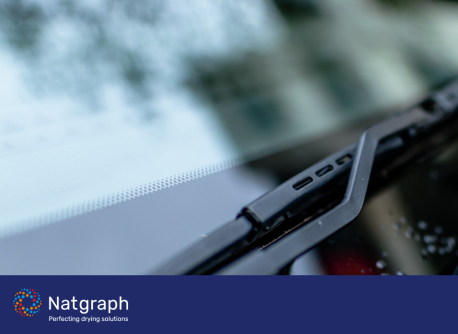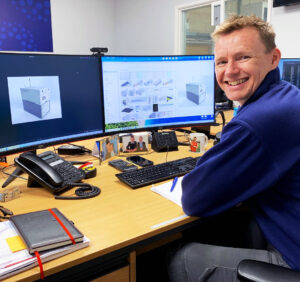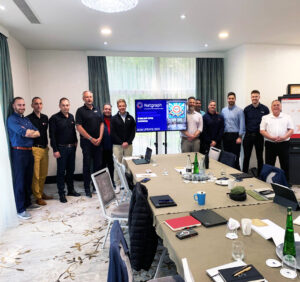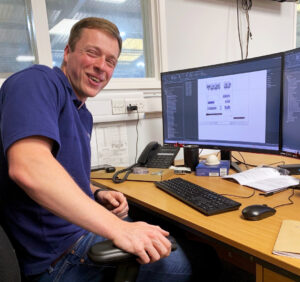Automotive glass drying with natgraph’s machinery
Glass plays a vital role in the automotive industry, providing structural integrity, visibility, and aesthetic appeal to vehicles. From windshields to windows, the quality and performance of automotive glass are critical for ensuring safety and comfort for drivers and passengers alike. An essential step in the manufacturing process of automotive glass is the drying phase, which significantly impacts the final product’s quality and functionality. In this blog post, we will explore the significance of glass drying within the automotive industry and how manufacturers utilise advanced technologies to achieve optimal results.
1. Importance of Glass Drying
Properly dried automotive glass is essential to prevent issues such as fogging, hazing, and water spots, which can hinder visibility and compromise driver safety. During the manufacturing process, glass sheets undergo various treatments and coatings to enhance properties like UV protection and shatter resistance. These treatments require precise drying to ensure uniformity and longevity of the coatings. Additionally, moisture trapped within glass layers can cause delamination, leading to reduced structural integrity and potential safety hazards.
2. Drying Techniques
In the automotive industry, glass drying methods have evolved significantly to meet the demands of modern vehicle production. Two common techniques used for drying automotive glass are:
A. Airforce (convection) drying
Convection drying involves using hot air to remove moisture from the glass surface. High-velocity air streams ensure efficient moisture removal, and manufacturers can control the drying parameters to suit different glass types and coatings.
B. Infrared drying
Infrared drying utilises infrared radiation to penetrate the glass surface and evaporate moisture from within. This method allows for faster drying times and is particularly effective for glass with multiple layers or complex shapes.
3. Advanced Drying Technologies
Automotive glass manufacturers now rely on advanced drying technologies to achieve consistent and high-quality results. Cutting-edge equipment, such as Natgraph’s Glass Dryers, incorporates precision control systems that enable manufacturers to tailor the drying process according to specific glass types and production requirements. These dryers offer rapid warm-up and fast cooling features, streamlining the overall manufacturing process and minimising downtime.
4. Energy Efficiency and Sustainability
As with any industry, sustainability is a growing concern in automotive glass manufacturing. To address this, manufacturers opt for energy-efficient drying solutions that reduce carbon footprints and operational costs. Advanced drying technologies, including Natgraph’s Glass Dryers, employ energy-efficient components and optimised processes to minimise energy consumption while maximizing drying efficiency.
5. Ensuring Quality and Safety Compliance
Automotive glass manufacturers must adhere to stringent quality and safety standards. Proper drying not only ensures optimal performance but also contributes to the overall longevity of the glass, enhancing its resistance to environmental factors and daily wear and tear. By investing in reliable and precise drying equipment, manufacturers can deliver automotive glass that meets regulatory requirements and exceeds customer expectations.
Conclusion
Glass drying is a critical stage in the automotive glass manufacturing process, impacting the quality, safety, and performance of the final product. Advanced drying technologies, such as those offered by Natgraph, enable automotive glass manufacturers to achieve consistent, high-quality results while optimising energy consumption. Embracing these innovative drying solutions ensures that automotive glass delivers on its promise of clarity, safety, and durability, ultimately enhancing the driving experience for consumers worldwide.
Want to learn more?
We have a helpful and knowledgeable team here to help you with any questions and enquiries you may have. You can contact us using our contact us page or use the button below to email us directly.



